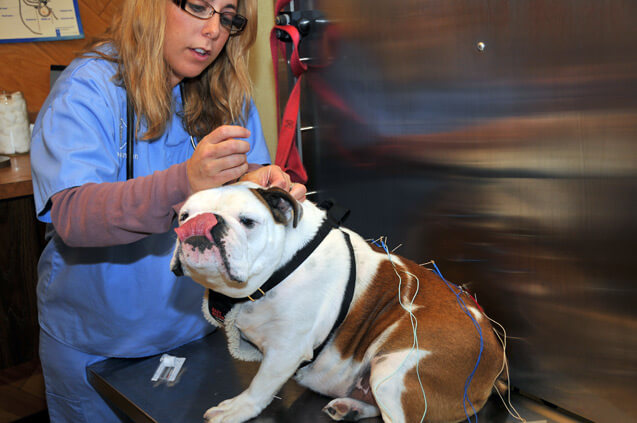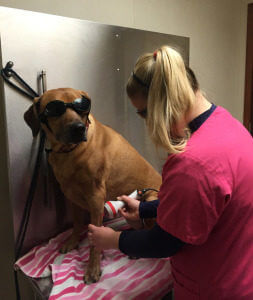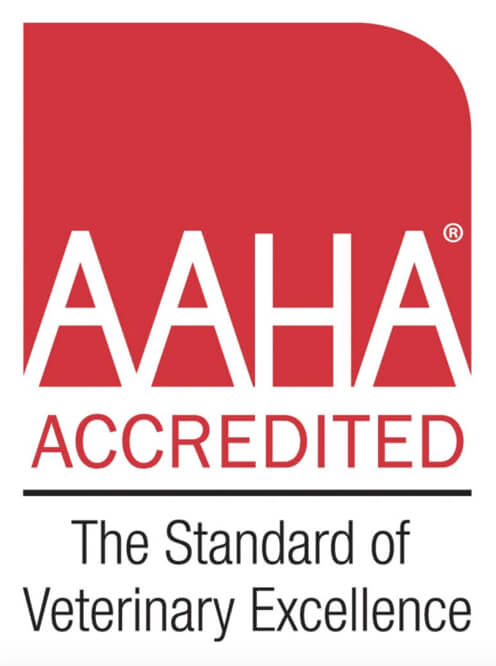
Arthritis is a relatively common occurrence in senior dogs. Some research indicates that over 50% of dogs over the age of seven are more likely to develop some form of arthritis in their lifetime. Osteoarthritis is the more common type of arthritis seen in older dogs. It is degenerative which means it is an ongoing condition that is the result of the cartilage in the joints deteriorating over time. As the cartilage becomes less and less present in the joint, it can become inflamed, lead to bone spurs and the retention of fluids. All of these can cause the painful symptoms we commonly associate with arthritis.
The areas on a dog’s body most commonly affected are the knees, hips, elbows and back. Typically, signs of arthritis usually start to appear in the latter half of a dog’s life, which can vary depending on the breed of dog. It is less common, but some dogs can start to display signs of arthritis at a young age. It is a good idea to be aware if your dog displays any of the symptoms listed below. The earlier arthritis can be detected, the better. Dogs are generally more susceptible to the disease than cats, and larger breeds have a higher risk factor than smaller breeds.
Symptoms to look for:
- Favoring a paw or limb
- Limping or lameness
- Displays stiffness in movement
- Displays signs of pain
- Unable to stand or rise from the ground – especially upon waking
- Unable to or reluctant to jump
- Unable to or reluctant to climb stairs
- Affected area sensitive to the touch
What causes Arthritis in dogs?
Injury
Serious trauma to a limb such as a broken bone, torn ligament, or suffering a dislocated joint can greatly increase the chance that your dog may develop arthritis in the affected joint area. Slower but consistent damage from extended running or jumping on hard surfaces, or severe overuse can also lead to joint damage over time.
Overweight/Poor diet
If your dog is overweight and carrying additional weight on their frame, this can place extra stress on the skeletal system and additional stress on supporting joints and ligaments.
Lack of Exercise
If your dog isn’t getting an adequate amount of exercise this can contribute to weaker muscles, ligaments and bones. Without sufficient support, it can put a strain on the skeletal system and increases the chance of injury and weight gain, both of which are contribute to the likelihood of becoming osteoarthritis.
Vicious Cycle
Unfortunately, its common that a dog that is already suffering from arthritis is also likely to be less active and consequently more predisposed to gain weight as a result. The extra weight in turn places more stress on the affected joints, causing pain and discomfort, reducing the level of activity and so on… It is very important to identify the symptoms early enough and make sure that they are able to get an adequate amount of exercise in a way that is both safe and effective.
Misdiagnosis
While not really a direct cause, often the misdiagnosis of arthritis can lead to lifestyle changes that ultimately DO result in arthritis. Arthritis in senior dogs is sometimes easy to misdiagnose. Often times, their symptoms of slowing down or being less mobile are immediately interpreted as a result of joint inflammation. The reality may be that they are stiff and tight due to muscle inflammation and soreness rather than arthritis. Owners then may feel that they should exercise or walk their dogs less, which in turns leads to weight gain, loss of muscle tone and mass and can make the situation worse in the long run, possibly leading to some form of arthritis later in their pet’s life. If you even suspect that your dog has arthritis, please make an appointment with your veterinarian and have them properly evaluate your dog’s condition.
Treatments and Management
 Simple changes in lifestyle are one of the easiest and effective measures to implement. These include maintaining a healthy weight for your pet through good diet and exercise and avoiding detrimental high-impact exercise and activities that place unnecessary stress on joints and ligaments.
Simple changes in lifestyle are one of the easiest and effective measures to implement. These include maintaining a healthy weight for your pet through good diet and exercise and avoiding detrimental high-impact exercise and activities that place unnecessary stress on joints and ligaments.
Diet
Diet and nutrition play a very important role in maintaining a health weight for your pet. Talk to your veterinarian about diet options. They will be able to recommend a suitable plan that fits your dog’s specific requirement. They can also help determine and formulate a complimentary exercise program that will help keep your dog healthy and lean.
Exercise
When choosing what types of exercise for your dog, remember its best to stick to LOW IMPACT activities only. Avoid any exercises that involve a lot of running and jumping on hard surfaces or jumping up to or down from larger heights.
The aim of exercising an arthritic dog isn’t just to strengthen the joints and ligaments, but also works to maintain good cardiovascular fitness and preserve good muscle mass and tone. This will help keep your dog’s weight in a safe and healthy range too.
Supplements:
Please consult your local Glen Oak veterinarian to determine the best supplements for your dogs. There are many different homeopathic and herbal remedies that can help your dog or cat.
Medications
After your dog has been evaluated by a veterinarian, he/she may recommend prescribing a medication. Typically, these consist of anti-inflammatory drugs such as NSAIDs (non-steroidal anti-inflammatory drug), but can also include corticosteroids and narcotics as well.
Keep in mind that with any drug, there is also the risk of side effects and undesirable complications, especially in older dogs that may have pre-existing or diminished kidney and liver function. It is also imperative that you do not mix any supplements, home-remedies or other medications with a medication that your veterinarian has prescribed with talking to them first!
Therapies
Used in conjunction with diet and lifestyle changes, certain therapies can work to reduce the symptoms of arthritis and provide temporary and long-term relief for your pet.
Acupuncture – Acupuncture is an ancient Chinese therapeutic technique that is a safe and non-invasive treatment option for your pet, with virtually no side effects. The Chinese found 361 points on people and 173 points on animals. Research shows stimulating these points releases serotonin, beta-endorphin and other neurotransmitters involved in the transmission of nerve impulses.
Massage – Just like their human counterparts, animals can benefit from massage therapy. After a few sessions, animals can see improved circulation, increased endorphin release, enhanced muscle tone and increased range of motion. Massage is also effective at loosening tight muscles and ligaments that were previously tense due to pain or general lack of use.
 Laser Therapy – Laser therapy stimulates the body to heal from within. Non-thermal photons of light are administered to the body for about 3 to 8 minutes and absorbed by the injured cells. The cells are then stimulated and respond with a higher rate of metabolism. This results in relief from pain, increased circulation, reduced inflammation, and an acceleration of the healing process. Relief and/or improvement is often noticed within hours depending on the condition and your pet’s response.
Laser Therapy – Laser therapy stimulates the body to heal from within. Non-thermal photons of light are administered to the body for about 3 to 8 minutes and absorbed by the injured cells. The cells are then stimulated and respond with a higher rate of metabolism. This results in relief from pain, increased circulation, reduced inflammation, and an acceleration of the healing process. Relief and/or improvement is often noticed within hours depending on the condition and your pet’s response.

